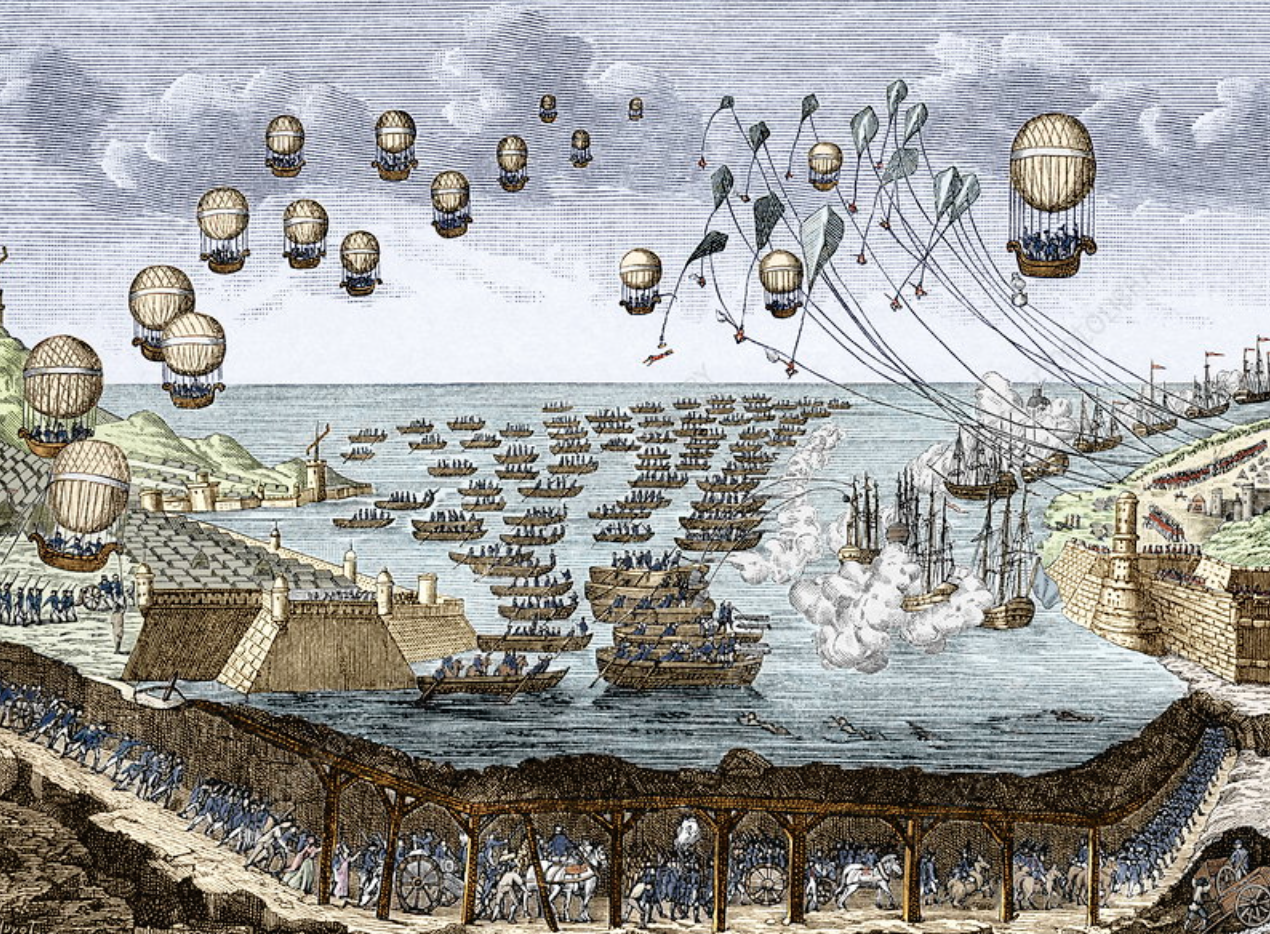In 1927, the year before Eric Blair travelled from London to Paris by train and boat, the A.L.A company (Alsace Lorraine Angleterre) began operating a passenger ferry between Tilbury and Dunkirk. A refitted steam ship assured the young writer’s overnight trip and the company’s brochures vaunted easy access to Flanders fields and northern beach resorts of France. But other, more ambitious ways of reaching the French coast had been dreamed up as far back as the very early 1800s. Most attempts to conquer the technical difficulties of constructing a tunnel under the channel never got much further than the drawing board. Engineers in the 19th century appeared to be more concerned with the problem of getting air in (and later, steam engine smoke out) than the almost biblical-scale task of boring and earth moving.

A proposed plan for Channel tunnel ventilation by Sir John Hawkshaw. 1866
Despite the inherent construction problems, lack of investors and an abundance of naysayers, in 1880, the shovels finally came out (or in this case, two Beaumont pneumatic tunnelling machines) and the work began in earnest. The result was a mile-long tunnel with an entrance in the chalk cliffs just outside Dover. In charge of the project, which was viewed by many, including Queen Victoria, as a threat to national security, was Sir Edward Watkin. The peer of the realm had built railways throughout much of England, was on the board of directors of French railway companies and envisaged linking the British network to those in continental Europe. He believed that British trade, and northern industries in particular, would greatly benefit from increased access to the continental market. His dream fell foul of the very vocal opposition who believed that a tunnel would only increase the likelihood of a French invasion.
The Briand-Kellog pact
In 1928, sixty-three countries came together to sign a historic agreement to end all war. It was, in itself, an extraordinary diplomatic achievement, and maybe the glow of (relatively short-lived) optimism that emanated from this event was partly responsible for the idea of a channel tunnel being once more mooted by the British government in January of the following year. A transcript from the House of Commons shows that the idea was being taken seriously even though the usual concerns over borders and national defence were clearly a sticking point.
Mr Thurtle – Member for Shoreditch
…in the view of this House, the construction of a Channel Tunnel would be advantageous both to this country and to Europe, as a whole, and the labour and material needed for the tunnel would increase productive employment in this country; therefore, having regard to the changed circumstances arising from diplomatic developments in Europe in recent years, the House invites the Government to take an early opportunity of reconsidering its attitude towards the project.
The Prime Minister
In view of the wide public interest in the Channel Tunnel project, the Government have come to the conclusion that the time is ripe for a comprehensive re-examination of the question. We are anxious that a very thorough examination should be made of the economic aspects of the matter, in order that these may be weighed with Imperial Defence considerations…
Mr Thurtle
Am I to understand from the Prime Minister that his proposal is, in effect, that the matter should once again be referred to the consideration of the Committee of Imperial Defence?
The Prime Minister
I have given no details as to the form in which the examination will take place, but it is perfectly obvious that, on the defence side as opposed to the economic side, the Committee of Imperial Defence must be consulted.
Mr Thurtle
…there is a very large body of opinion in the country which feels that the last word on this matter ought not necessarily to rest with the Committee of Imperial Defence.
Mr Bromley – Member for Barrow-in-Furness
…has there been any definite ascertainment of the greatest depth of the Channel under which the proposed tunnel would have to pass, and at what gradients the railway, either by steam or electricity, would have to run?
The Prime Minister
That is exactly one of a hundred questions to which I desire an answer.
Once again, the project did not get further than the research stage, and once concerns over German re-armament became more pressing through the 1930s, plans were shelved indefinitely. Although the idea would occasionally resurface in parliament through the 1960s and 70s, economic downturns and more pressing domestic issues on both sides of the channel meant that 108 years would separate the initial attempt by Sir Edward Watkin from the start of excavation in 1988.
They had a dream…
For all the technological wonder of the tunnel and the undoubted convenience to millions of travellers, the reality of the Eurostar could never be as charming as the whimsical vision of George Méliès in his 1907 film Le Tunnel sous la Manche – ou Le cauchemar franco-anglais (The channel tunnel – or The Anglo-French nightmare) in which the French President and the English King quite literally share the same dream (and nightmare!) in which they shake hands across the channel as the work of tunnelling goes on beneath them and French and English fish greet each other warmly in the sea above.
Duncan Roberts
Sources:
House of Commons Debate 22 January-1929 vol 224 cc20-220 – Condensed extract
Dunkerque Maritime Museum – reference section
The History of the Channel Tunnel – Nicolas faith. 2018
Sir Edward Watkin: The last of the railway Kings – John Neville Greaves. 2005
The main image shows a Napoleonic plan from 1803 for the invasion of England by French Navy and troops – via a tunnel under the channel.
Share this:
Tags: 1928, 1929, down and out, eurostar, George Melies, orwell, paris
